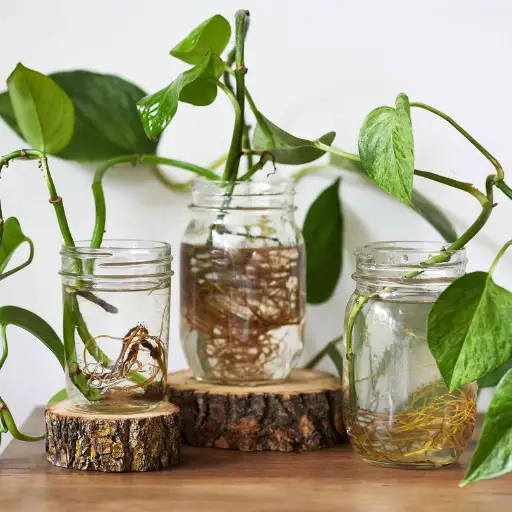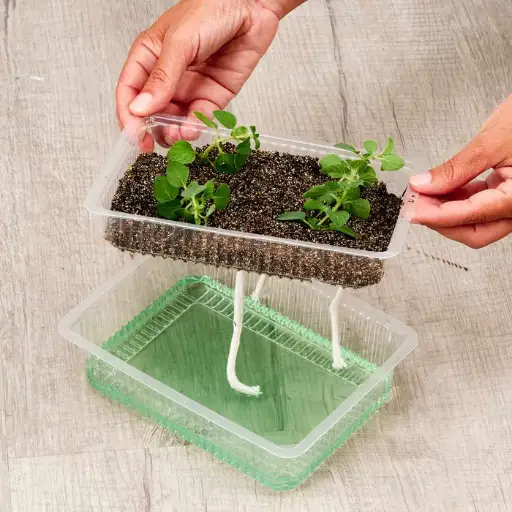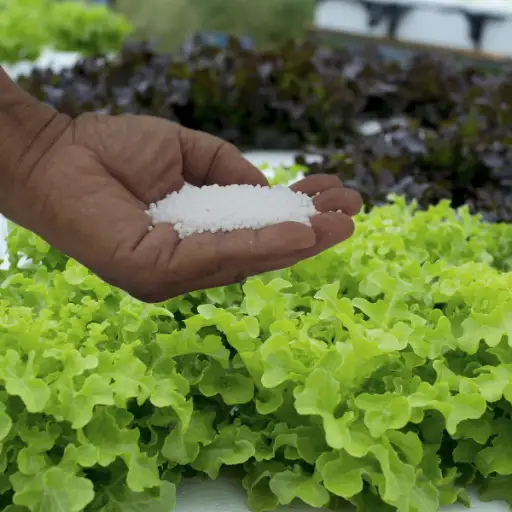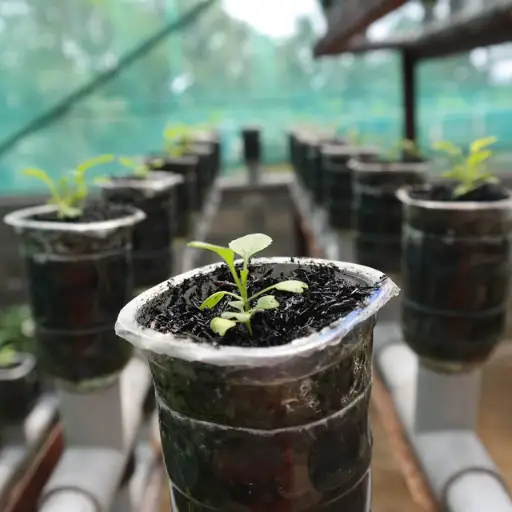Growing healthy plants begins with understanding the right nutrients and methods to use, and this article aims to explore the intriguing question: can hydroponic fertilizer be effectively used in soil for optimal plant growth? As agricultural and gardening practices continue to evolve, many enthusiasts and professionals are experimenting with unconventional approaches to maximize yields and plant health. This blog will delve into the composition of hydroponic fertilizers, compare them with traditional soil fertilizers, and assess whether combining these methods can benefit your gardening efforts. By examining scientific insights and practical experiences, we aim to provide readers with a comprehensive understanding of how to optimize plant nutrition for flourishing gardens.
What Are Hydroponic Nutrients?

Hydroponics and the Nutrition Paradox
Hydroponics involves growing plants in a nutrient solution primarily composed of water. Unlike conventional agriculture, where nutrient uptake is performed through soil, hydroponics requires detailed knowledge about and correct formulations of the macronutrients and micronutrients necessary for the plant’s survival and growth. In addition to this, hydroponic fertilizers are made to be highly soluble and readily available to the plant, making the presence of soil for plant growth unnecessary. Soil or organic fertilizers after all take into consideration the availability of nutrients and their interactions with the organic matter in the soil. The problem of effectively utilizing hydroponic fertilizers and growing plants in the soil comes in when trying to achieve this synchronization of nutrient cycles to ensure over-fertilization and nutrient lockout does not happen. Paradigm shifts such as incorporating the use of soil pH and the existing nutrients concentration in the soil are necessary for the merging of hydroponic with the traditional soil systems.
What Are The Differences Between Hydroponic Nutrients And Soil Fertilizers?
Hydroponics and soil fertilization address different growing media and thus, are formed differently. Hydroponic nutrients are made up of only water-soluble compounds that can be easily accessed by the plant roots in soil-less system that is provided. This form increases the efficiency of gases uptake and allows control over the quantity of nutrients required. On the other hand, soil fertilizers consist of organic materials and inorganic materials in a balanced proportion that is meant to improve the natural ecosystem of the soil. Such fertilizers have to engage with soil microbes and organic matters that are reasonably slow allowing natural processes and amendments to be exploited to enhance plant growth. Soil fertilizers assist in enhancing the soil and its structure but hydroponic solution does not rely on any microbial activity. This primary difference determines the application and utilization of each kind of fertilizer under its specified growing method.
Advantages of Applying Hydroponic Nutrients in Soil
There are a number of reasons why gardeners interested in improving plant growth may want to use hydroponic nutrients in soil gardens. One of the main advantages is increased efficiency in nutrient delivery. Because hydroponic nutrients can dissolve easily, the recipes for them can be properly tailored so that plants are not ever at a risk of nutrient deficiency, as is usually the case with soil fertilization. Furthermore, because there are no organic materials in the soil that have to decay over time, the hydroponic nutrients are taken up much quicker. In simple terms, the rate of plant growth and productivity will increase as a result of this. Customized nutrient mixtures also make it easier to keep soil pH in the ideal range which minimizes chances of nutrient lockout occurring and safeguarding a proper nutrient balance. The use of hydroponic nutrients in soil will allow for synergism to emerge that will incorporate the advantages of both growing systems with the possibility of plants that are healthier and more productive.
Can Hydroponic Nutrients Be Used in Soil?
What Nutrients Can Be Used from Hydroponic Systems?
Commonly practised hydroponic systems contain varying forms of macronutrients such as nitrogen (N), phosphate (P), and potassium (K), as well as secondary ones like Ca, Mg, and S. As well as N, P, and K, a proper concentration of all macro nutrients must be present in the solution, including B, Cu, Fe, Mn, Mo, and Zn, which are required in small amounts. Most vegetable nutrients contain these formulations in a liquid concentrated form, which is very soluble so that crops can easily absorb it when diluted in water and fed to the plants or used in planting media. Many times, these nutrients are chelated so they remain in solution and are readily available to plants. For soil landscaping, these recommended nutrients can be utilized to increase the rate of plant growth by providing plants with all the necessary nutrient elements specifically required which effectively eliminates the nutrient deficiency associated with conventional soil fertilizers.
Risks that Come with the Use of Hydroponic Nutrients in the Soil
There are some risks that can be associated with the use of hydroponic nutrients in soil-based cultures that must be taken into consideration. The first worry is about the occurrence of over-fertilization because nearly all hydroponic formulations are so concentrated that if no attention is paid to dilution, they can cause nutrient burn in the plants. Furthermore, the ongoing reliance on these nutrient solutions can alter the existing soil microbial populations and their diversity which in the long run will affect the soil health. Nutrient runoff is another potential risk, which refers to the situation where excess nutrients seep out of the soil into the surrounding environment where they can pollute water bodies. Hence, it is important to be able to control the application of nutrients so as to be able to suit the requirements of the plant and the type of soil utilized.
How to Properly Use Hydroponic Nutrients in Soil
In order to use hydroponic nutrients in soil appropriately, the very first step is to test your soil and understand your nutrient levels and your pH in case there are any deficiencies that can cause over-fertilization and further the additional nutrients added would enhance the already existing soil profile. After this, you can then diffuse the hydroponic nutrients as per the plant needs and instructions. Start out with the lowest concentrated value of those recommended for hydroponic systems then increase them based on the level of response by the plants. Remember to constantly check plant health as well as soil health and make the necessary changes to nutrient mixes when needed. When you do this, you will strengthen the potential of other plants and avoid the concentration of all the nutrients into a single level. Also, apply organic matter and foster natural soil activities so that there is a balanced soil microbiology. This integrated approach will ensure that you exploit the efficacy of hydroponic nutrients in soil gardening.
How to Transition from Hydroponics to Soil Gardening?

Steps to Prepare Hydroponic Nutrients for Soil Use
- Test Your Soil: The first step involves soil testing prior to using any hypertrophic nutrients. Determine the current nutrient status of the soil as well as its pH. Interpreting this data helps tailor the newer nutrient blend that is to be introduced with the soil.
- Understand Plant Needs: Identify the specific plants that will be grown and their nutritional needs. This way, the nutrient solution will facilitate plant growth without having excess nutrient solution.
- Prepare Your Nutrient Solutions to the Acceptable Concentration: Hydroponic nutrients are often more concentrated than soil nutrients. Start at 50% or 25% of the recommended strength for soil-based plants in order to prevent injuring roots with a solution that is too strong.
- Introduce Them Little By Little: Address plants reactions to concentrate that is normalized during the application. Increase concentrations when required but do so progressively to avoid overwhelming the plants.
- Observe and Be Flexible: Observe the plants and soil throughout the process. Adapt the nutrient mix with soil or plants hoarding carbon nutrient as the environment changes.
- Improving Soil Structures: Some organic material like compost should be added to the soil in order to increase its structure and the activity of bacteria. This encourages the healthy ecosystem of soil which is the counterpart to the nutrient solution.
- Regular Soil Maintenance: A regular cycle of soil testings should be done coupled with regular adjustments of the rate of nutrient applications so as to prevent nutrient inequalities or scarcity over time.
Adjusting Nutrient Ratios for Soil Mediums
While attempting to alter and improve the nutrient ratios for soil mediums, the plant type being grown and the present nutrient content of soil has to be known. A first step that a farmer is supposed to do is to carry out a soil test to assist in determining the degree of any nutrient depletion or bushiness, especially N, P, and K. This is the starting point for adjusting nutrient ratios and establishing a baseline for adding fertilizers to the soil to balance these elements to optimal levels. Well rotted compost or manure could also be added as organic supplements to improve the nutrient content. Constant and consistent testing of the soil is a parameter that a farmer should put into place so that the relevant ratios of nutrients are maintained through fluctuations in plant uptake and environmental parameters.
Plant Growth Observation after Transitioning Soil Medium
Proper observations must be done with the intention of closely monitoring the plants health to avoid any transplanting shock. Start off by checking the leaves for color and texture, as they are usually the first ones to show when a plant has nutrients lacking or too much. To assess root health, check the roots for any sign of rot or diseases to make sure they are white and hard. Any rate of plant growth should also be able to be measured and compared to what is normal for the target species. To document changes in growth, use of a ruler for height and measuring tape for leaf spread and do such types of measurements over a period of time. Pay attention to and control some of the factors such as light, temperature, and humidity since they affect plant growth and development. This change also requires one to practice proper irrigation guidelines in order to prevent adverse effects on the plants.
What Are the Best Practices for Using Hydroponic Nutrients in Soil?

Choosing the Right Hydroponic Nutrients for Soil
It is crucial to consider the specific requirements of the targeted plants when selecting the appropriate hydroponic nutrients for soil. Hydroponic nutrients are unlike soil fertilizers in that most of them are compactors and should be diluted before application into the soil. First of all, seek starter nutrient blends rich in primary macronutrients and include calcium and magnesium as secondary macronutrients to speed up the plants growth rate. Adjusting all other factors remains critical as many plants require specific densities of more than one nutrient formulation per growth stage. Remember to take note of the nutrient pH levels; in soils, hydroponic nutrients require careful control of the pH to prevent lock out of critical elements – a typical ideal is pH 6.0 to 7.0. Proper application and consistent testing of the soil nutrients will lead to modification of nutrients to the complexulons so as to prevent nutrient burning or any deficiency effects.
Avoiding Fertilizer Over-application
Using hydroponic nutrients in soil requires a considerate use of balanced fertilizers to avoid plant stress for optimum crop yields. This means that if a concentration of a certain plant nutrient needs to be higher during the plant seedling stage or the flowering stage, adjust accordingly. Plants are often known to require more nitrogen during vegetative growth, and phosphorus and potassium during the flowering stage. In large doses, however, fertilizers can be harmful to the crops; therefore, frequent small doses are to be used so that steady nutrient levels are achieved without over-application. Soil tests for pH and nutrients should be conducted in a regular pattern and the application schedule should be adjusted according to environmental changes as well as plant response time. Additionally, by measuring the electrical conductivity of your nutrient solutions, you can see whether your nutrient was too strong or dilute, which will help prevent uneven application. Application rates and the frequency of these applications have to be systematically recorded with the aim of gradually refining the schedule for even better efficiency.
Signs of Nutrient Deficiency in Plants Cultivated in Soil
There are several signs of nutrient deficiency in soil-grown plants, which include impairment to the structure, growth as well as production of the plants. A common form of deficiency is nitrogen deficiency which leads to the yellowing of leaves whereby the whole plant is deprived of its dark green color. The depletion of phosphorus can result in leaves appearing dark green or purple in color while lacking potassium most often leads to the impaired edges of the leaves which may become brown or scorched. New growth can also be abnormal or stunted due to the lack of calcium while magnesium deficiency causes interveinal chlorosis or the yellowing of the area between the veins of a leaf. To address these deficiencies, soil testing followed by the addition of soil nutrients is encouraged. Changes in plant growth and foliage usually provide very good qualifications for such changes and, therefore, the need for interventions arises.
What Types of Plants Benefit from Hydroponic Nutrients in Soil?

Recommended Plant Variants for Utilizing Hydroponic Nutrients Application
According to my investigation, I’ve noticed that many plant species may be grown in soil and benefit from hydroponic nutrients—vegetable, herb and ornamental. It is recommended to grow lettuce and spinach as they are fast growing and high accumulators of nutrients. Basil, cilantro, and mint are other herbs that benefit from hydroponic nutrients which enable them to have enriched flavors and shorter harvest cycles. This also applies to certain fruits such as tomatoes and peppers because nutrients will enhance their performance and even the quality of the crop. The correct fertilizer ratios specifically formulated for hydroponic systems can assist in improving growth and productivity in these soil-grown crops.
Hydroponic Growth Vs Soil Growth: A Comparison
Hydroponically grown plants tend to have quicker growth in contrast to those grown in traditional in-soil cultivation. This is as a result of the fact that hydroponic systems provide nutrients to plant roots in a concentrated solution form that is readily available. Due to this, less energy is utilized by the plants looking for nutrients and pockets of energy are focused on growth and development. Hydroponics also allows the easy adjustment of pH and nutrient levels to be controlled, which can greatly promote the rate of growth of plants. Soil-fed plants, on the other hand, are good for the environment but have the competitive disadvantage of growing slowly as they are dependent on nutrients and nutrients processes constructed within the soils.
Hydroponic Nutrients for Specific Plant Needs
In regard to my research, it would seem that hydroponic nutrients are designed to offer plants all the necessary requirements optimally when grown on hydroponic systems. These nutrients are presented in two main parts: macronutrients and micronutrients. Macronutrients include nitrogen, phosphorus, and potassium, which are necessary for the adequate growth and development of the plant. Micronutrients comprise essential elements like iron, manganese, and zinc, which are needed for plant health maintenance, although they are present in minute levels. Since nutrient solutions can be formulated specifically for individual crops, this will mean that any one crop will not only grow more efficiently, but also the yield in hydroponic systems will be enhanced.
Reference sources
- Can you use hydroponic nutrients in soil? (2024 guide) – This guide explains that while it’s possible to use hydroponic nutrients in soil, it may not be ideal.
- Can I use Hydroponics Nutrients in soil? – This article suggests using a very diluted solution of hydroponic nutrients when applying them to soil.
- Can hydroponic nutrients be used in soil – This source confirms that hydroponic nutrients can be used in soil-based gardening with certain considerations.
These sources should provide a comprehensive view on the topic for your readers.
Frequently Asked Questions (FAQs)

Q: How do I prevent nutrient burn when transitioning from hydroponic nutrients to soil?
A: It is recommended that you control the amount of nutrients added into a given area and scale down the concentration of hydro nutes as per your plant needs. This will aid in preventing nutrient burn while ensuring they get the needed nutrients.
Q: Should the application method for the hydroponic nutrient solution be modified when soil is used as the growth medium?
A: Yes, the application method may need slight alteration. Hydro supplements are made in heavier concentration hence it would be advisable to use dilution before application on soil to avoid over fertilization.
Q: Are there any challenges I will face when switching from hydroponics to soil?
A: Switching from hydroponic culture to the soil culture requires knowledge of the differences in the availability of nutrients in the plants’ root zones. Soil is a different medium in terms of moisture and nutrient retention hence feeding frequency, feeding types need to be modified.
Q: Is it advisable to apply organic fertilizers in conjunction with hydroponic systems?
A: Hydroponic solutions with organic fertilizers can be used but care must be taken not to lose track of the total nutrient concentration. Certain combinations might trigger nutrient lockout or imbalance.
Q: De ce ezita unii gradinari sa utilizeze nutrienti hidroponici? Poate influenta gustul plantelor?
A: Gustul plantelor poate fi influentat de nutrientii folositi. Desi nutrientii hydro sunt eficienti in absorbtia rapida, folosirea lor in mod corect in sol ajuta sa “nu exista” gusturi deminus sau in exces.
Q: La cat de des ar trebui sa hranesc plantele in sol, atunci cand utilizez nutrienti hidroponici?
A: Rata de alimentare va fi definita si de tipul plantei si de stadiul de crestere. In general, insamantate in pamant, pentru fiecare saptamana sau de 2 ori in saptamana cu solutie mai slaba de nutrienti hidro, vecr sa nu depaseasca doar anumite limite de reactie.






